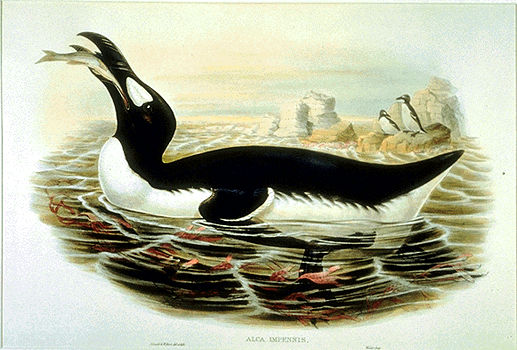Browse "Animals"
-
Article
Arthropoda
Arthropoda, phylum of bilaterally symmetrical animals having external skeletons (exoskeletons), multisegmented bodies and paired, jointed appendages.
"https://d2ttikhf7xbzbs.cloudfront.net/media/media/8eb04cf7-636d-460f-a5d4-bedd5bf6298d.jpg" // resources/views/front/categories/view.blade.php
https://d2ttikhf7xbzbs.cloudfront.net/media/media/8eb04cf7-636d-460f-a5d4-bedd5bf6298d.jpg
-
Article
Artiodactyla
Artiodactyla is an order of even-toed mammals that walk on their toenails (unguis). This and the other order of hoofed mammals, the Perissodactyla, are collectively called ungulates.
"https://d2ttikhf7xbzbs.cloudfront.net/media/media/3a709b78-b386-493f-a455-f16fe201283d.jpg" // resources/views/front/categories/view.blade.php
https://d2ttikhf7xbzbs.cloudfront.net/media/media/3a709b78-b386-493f-a455-f16fe201283d.jpg
-
Article
Atlantic Salmon
Atlantic Salmon (Salmo salar), probably the best-known member of the Salmonidae family, occurs on both sides of the Atlantic Ocean.
"https://d2ttikhf7xbzbs.cloudfront.net/media/media/21de21d6-84a6-4c5f-b034-aa2abcdf0052.jpg" // resources/views/front/categories/view.blade.php
https://d2ttikhf7xbzbs.cloudfront.net/media/media/21de21d6-84a6-4c5f-b034-aa2abcdf0052.jpg
-
Article
Auk
Auks or Alcids refers to birds of the taxonomic group Alcidea. Alcidae is a family within the order Charadriiformes of highly specialized seabirds that contains auks (including the now-extinct great auk), auklets, murres, murrelets, razorbills, dovekies, guillemots and puffins.
"https://d2ttikhf7xbzbs.cloudfront.net/media/media/007ecccd-3ff4-4c68-81c8-4416ce44836c.jpg" // resources/views/front/categories/view.blade.php
https://d2ttikhf7xbzbs.cloudfront.net/media/media/007ecccd-3ff4-4c68-81c8-4416ce44836c.jpg
-
Article
Avocet
The avocet (order Charadriiformes, family Recurvirostridae) is a large, long-legged shorebird about 50 cm long with striking white and black plumage.
"https://development.thecanadianencyclopedia.ca/images/tce_placeholder.jpg?v=e9dca980c9bdb3aa11e832e7ea94f5d9" // resources/views/front/categories/view.blade.php
https://development.thecanadianencyclopedia.ca/images/tce_placeholder.jpg?v=e9dca980c9bdb3aa11e832e7ea94f5d9
-
Article
Badger
The American badger (Taxidea taxus) is the only North American member of the weasel family specialized for burrowing and capturing prey underground.
"https://development.thecanadianencyclopedia.ca/images/tce_placeholder.jpg?v=e9dca980c9bdb3aa11e832e7ea94f5d9" // resources/views/front/categories/view.blade.php
https://development.thecanadianencyclopedia.ca/images/tce_placeholder.jpg?v=e9dca980c9bdb3aa11e832e7ea94f5d9
-
Article
Barnacle
Barnacle, common name for marine invertebrates of subclass Cirripedia, class Crustacea.
"https://development.thecanadianencyclopedia.ca/images/tce_placeholder.jpg?v=e9dca980c9bdb3aa11e832e7ea94f5d9" // resources/views/front/categories/view.blade.php
https://development.thecanadianencyclopedia.ca/images/tce_placeholder.jpg?v=e9dca980c9bdb3aa11e832e7ea94f5d9
-
Article
Bass
Bass, name applied to members of 4 fish families: temperate bass (Moronidae) with 3 species in Canada (white perch, white and striped bass); sunfish (Centrarchidae) with 12 species in Canada (including largemouth, rock and smallmouth basses); temperate ocean bass (Acropomatidae) with 4 species in Canada (blackmouth widejaw, recto, spiny widejaw, wreckfish); and sea bass (Serranidae) with 4 species in Canada (yellowfin bass, black sea bass, red barbier and snowy grouper). It can be seen that some members of bass families are not called bass. Anglers also use the word for several unrelated species. Temperate basses are found in marine, brackish or fresh waters of Eastern Canada, with striped bass occurring along the BC coast as a result of introductions.
"https://d2ttikhf7xbzbs.cloudfront.net/media/media/92419e20-5399-4c5f-822e-f1dd8f18ea60.jpg" // resources/views/front/categories/view.blade.php
https://d2ttikhf7xbzbs.cloudfront.net/media/media/92419e20-5399-4c5f-822e-f1dd8f18ea60.jpg
-
Article
Bat
Bats are nocturnal mammals of the order Chiroptera (literally "hand wing"). Bats are the only flying mammals. Most bats in Canada are plain-nosed (family Vespertilionidae).
"https://d2ttikhf7xbzbs.cloudfront.net/media/media/5da40dfc-80ce-4ee8-9eaf-37787af6484c.jpg" // resources/views/front/categories/view.blade.php
https://d2ttikhf7xbzbs.cloudfront.net/media/media/5da40dfc-80ce-4ee8-9eaf-37787af6484c.jpg
-
Article
Bear (Animal)
Bears (of the family Ursidae) are stocky, bob-tailed mammals with 5 clawed toes on each paw. Three species inhabit Canada.
"https://d2ttikhf7xbzbs.cloudfront.net/media/media/70d03598-ed3e-44b1-b795-38a5cc5b3e00.jpg" // resources/views/front/categories/view.blade.php
https://d2ttikhf7xbzbs.cloudfront.net/media/media/70d03598-ed3e-44b1-b795-38a5cc5b3e00.jpg
-
Article
Bear Attacks
Infrequent attacks on humans have been made by grizzly (or brown), black or polar bears. Bears can run at speeds exceeding 50 km/h, are significantly stronger than people and can inflict serious injury.
"https://d2ttikhf7xbzbs.cloudfront.net/media/media/39cb1d7c-2ee0-42d4-93e3-34525d646964.jpg" // resources/views/front/categories/view.blade.php
https://d2ttikhf7xbzbs.cloudfront.net/media/media/39cb1d7c-2ee0-42d4-93e3-34525d646964.jpg
-
Article
Beaver
The beaver (Castor canadensis) is a herbivorous mammal. It is Canada’s largest rodent and the second-largest rodent in the world (after the capybara). It is primarily nocturnal and lives a semi-aquatic life. The beaver is one of the only mammals, other than humans, that can manufacture its own environment. It is known for building dams, canals and lodges. Its colonies are created by one or more beaver-built dams, which provide still and deep water for protection against predators. An emblem of Canada older than the maple leaf, the beaver has had a greater impact on Canadian history and exploration than any other animal or plant species. (See also Fur Trade in Canada.)
"https://d2ttikhf7xbzbs.cloudfront.net/media/media/8a7e7f1f-a12b-4331-ad97-069d749d4417.jpg" // resources/views/front/categories/view.blade.php
https://d2ttikhf7xbzbs.cloudfront.net/media/media/8a7e7f1f-a12b-4331-ad97-069d749d4417.jpg
-
Article
Bedbug
Bedbugs (Cimex spp.) are small insects that feed on the blood of vertebrates. They cannot fly, jump or travel very far independently, so they primarily spread between locations by being carried on objects and clothing. Bedbugs are hemipterans, or “true bugs,” in the family Cimicidae. There are hundreds of bedbug species, with two species that are common pests of humans: Cimex hemipterus and, more commonly, C. lectularius. They have been a pest-control issue in Canada and the rest of the world since at least the early 2000s. Bedbugs have been parasites of humans for thousands of years and likely evolved from an ancestor that lived in caves and fed on bats.
"https://d2ttikhf7xbzbs.cloudfront.net/bedbug/bedbug.jpg" // resources/views/front/categories/view.blade.php
https://d2ttikhf7xbzbs.cloudfront.net/bedbug/bedbug.jpg
-
Article
Bee
Bees are members of the insect order Hymenoptera (including sawflies, wasps, bees and ants) whose habits of feeding on plant pollen and nectar have made them important pollinators of flowering plants and crops. There are more than 20,000 species worldwide, and nearly 800 can be found in Canada. Bees’ nesting habits range from solitary to highly eusocial. Most bees are solitary, wild species, but some are kept or managed for pollination of crops or to produce honey, including the non-native western honey bee (Apis mellifera). Other familiar bees include bumble bees (genus Bombus), mason bees (genus Osmia) and leafcutter bees (genus Megachile). More than a third of all bee species found in Canada are either mining bees in the genus Andrena, or sweat bees in the genus Lasioglossum.
"https://d2ttikhf7xbzbs.cloudfront.net/media/media/8af5115a-4b36-4dd2-a573-4f00cd5a4128.jpg" // resources/views/front/categories/view.blade.php
https://d2ttikhf7xbzbs.cloudfront.net/media/media/8af5115a-4b36-4dd2-a573-4f00cd5a4128.jpg
-
Article
Beekeeping
The complex social organization, the biology and the industrious nature of honeybees (genus Apis) have long fascinated people.
"https://development.thecanadianencyclopedia.ca/images/tce_placeholder.jpg?v=e9dca980c9bdb3aa11e832e7ea94f5d9" // resources/views/front/categories/view.blade.php
https://development.thecanadianencyclopedia.ca/images/tce_placeholder.jpg?v=e9dca980c9bdb3aa11e832e7ea94f5d9
